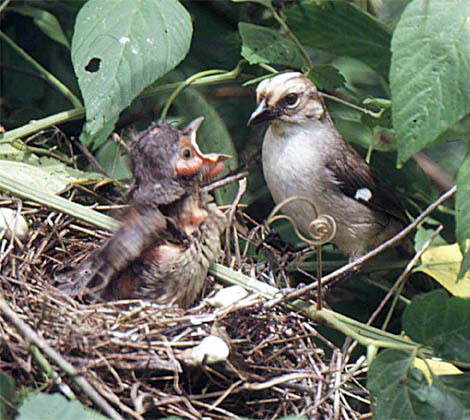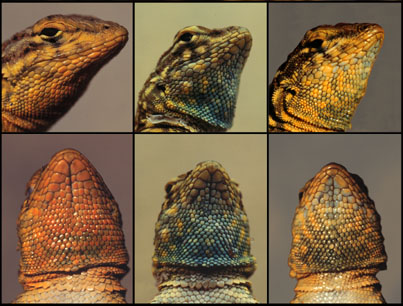Organisms can determine kin relatedness in many ways, sometimes by indirect cues.
 Kin selection can only be effective, of course, if organisms can differentiate kin from non-kin (Grafen 1990). Since they cannot determine each other's genes directly, kinship or degree of genetic relatedness must be perceived indirectly, through vicarious clues (Campbell 1974). The case of Belding's ground squirrels illustrates how locality may function as a substitute when kin tend to inhabit the same area.
For example, boobies on the Galápagos Islands (Sula nebouxii) recognize their offspring only by location: within a ring of guano that marks their rudimentary nest. If a nestling falls outside the ring, whether accidentally or by being pushed, it is treated as non-kin and is neither cared for nor permitted to return (Gould 1983). Vicarious indicators thus do not always function optimally.
Kin selection can only be effective, of course, if organisms can differentiate kin from non-kin (Grafen 1990). Since they cannot determine each other's genes directly, kinship or degree of genetic relatedness must be perceived indirectly, through vicarious clues (Campbell 1974). The case of Belding's ground squirrels illustrates how locality may function as a substitute when kin tend to inhabit the same area.
For example, boobies on the Galápagos Islands (Sula nebouxii) recognize their offspring only by location: within a ring of guano that marks their rudimentary nest. If a nestling falls outside the ring, whether accidentally or by being pushed, it is treated as non-kin and is neither cared for nor permitted to return (Gould 1983). Vicarious indicators thus do not always function optimally.
 European cuckoos and American cowbirds, for instance, lay their eggs in the nests of other species, where the host birds raise the chicks as if kin. Such parasitism exploits the limits of an evolved system of kin detection.
European cuckoos and American cowbirds, for instance, lay their eggs in the nests of other species, where the host birds raise the chicks as if kin. Such parasitism exploits the limits of an evolved system of kin detection.
Another system for detecting kin indirectly is based on similar traits. Side-blotched lizards in California (Uta stansburgiana) have three throat colors: orange, yellow and blue.  They establish mutually favorable territories based on the throat visual cues, even when unrelated individuals are mixed. Here, the trait seems to signal genetic similarity, functioning as a substitute for actual genetic relatedness (Sinervo and Clobert 2003). Again, there is a slight displacement between kin and the cue for detecting it: kin selection inevitably involves some probability.
They establish mutually favorable territories based on the throat visual cues, even when unrelated individuals are mixed. Here, the trait seems to signal genetic similarity, functioning as a substitute for actual genetic relatedness (Sinervo and Clobert 2003). Again, there is a slight displacement between kin and the cue for detecting it: kin selection inevitably involves some probability.
The ability of humans to ascertain kin has been investigated recently with special regard to attitudes towards incest and its avoidance. Primates, including humans, are able to track kin relationships through observed births — for example, younger (but not older) siblings. They use this information in social interactions (even if unconsciously). In other cases, siblings seems to use years of cohabitation, regardless of whether they are actually kin, as a vicarious indicator (Lieberman, Tooby and Cosmides 2003, 2007). While humans in most cultures tend to associate in family groups, the role or extent of kin selection remains an open question (considered further in the sections below).